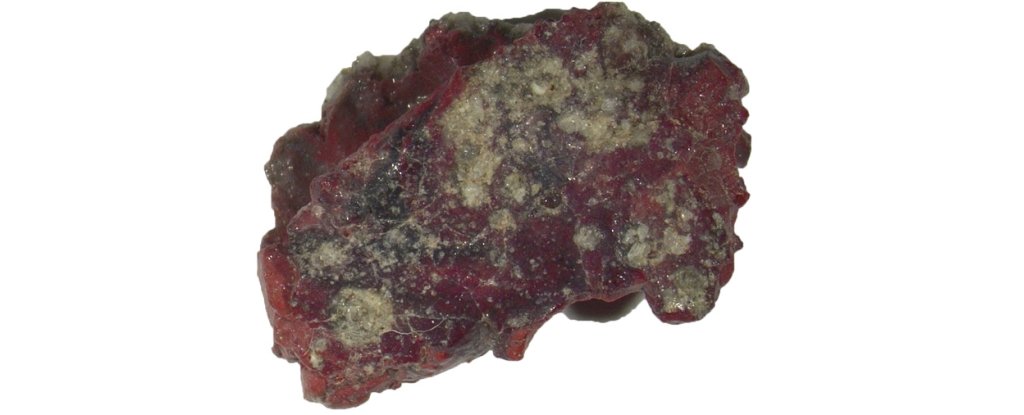Products You May Like
At 5:29 am on the morning of 16 July 1945, in the state of New Mexico, a dreadful slice of history was made.
The dawn calm was torn asunder as the United States Army detonated a plutonium implosion device known as the Gadget – the world’s very first test of a nuclear bomb, known as the Trinity test. This moment would change warfare forever.
The energy release, equivalent to 21 kilotons of TNT, vaporized the 30-meter test tower (98 ft) and miles of copper wires connecting it to recording equipment. The resulting fireball fused the tower and copper with the asphalt and desert sand below into green glass – a new mineral called trinitite.
Decades later, scientists discovered a secret hidden in a piece of that trinitite – a rare form of matter known as a quasicrystal, once thought to be impossible.
“Quasicrystals are formed in extreme environments that rarely exist on Earth,” geophysicist Terry Wallace of Los Alamos National Laboratory explained in 2021.
“They require a traumatic event with extreme shock, temperature, and pressure. We don’t typically see that, except in something as dramatic as a nuclear explosion.”
Most crystals, from the humble table salt to the toughest diamonds, obey the same rule: their atoms are arranged in a lattice structure that repeats in three-dimensional space. Quasicrystals break this rule – the pattern in which their atoms are arranged does not repeat.
When the concept first emerged in the scientific world in 1984, this was thought to be impossible: crystals were either ordered or disordered, with no in-between. Then they were actually found, both created in laboratory settings and in the wild – deep inside meteorites, forged by thermodynamic shock from events like a hypervelocity impact.
Knowing that extreme conditions are required to produce quasicrystals, a team of scientists led by geologist Luca Bindi of the University of Florence in Italy decided to take a closer look at trinitite.
But not the green stuff. Although they’re uncommon, we have seen enough quasicrystals to know that they tend to incorporate metals, so the team went looking for a much rarer form of the mineral – red trinitite, given its hue by the vaporized copper wires incorporated therein.
Using techniques such as scanning electron microscopy and X-ray diffraction, they analyzed six small samples of red trinitite. Finally, they got a hit in one of the samples – a tiny, 20-sided grain of silicon, copper, calcium and iron, with a five-fold rotational symmetry impossible in conventional crystals – an “unintended consequence” of warmongering.
“This quasicrystal is magnificent in its complexity – but nobody can yet tell us why it was formed in this way,” Wallace explained in 2021 when the team’s research was published.
“But someday, a scientist or engineer is going to figure that out and the scales will be lifted from our eyes and we will have a thermodynamic explanation for its creation. Then, I hope, we can use that knowledge to better understand nuclear explosions and ultimately lead to a more complete picture of what a nuclear test represents.”
This discovery represents the oldest known anthropogenic quasicrystal, and it suggests that there may be other natural pathways for the formation of quasicrystals. For example, the fulgurites of molten sand forged by lightning strikes, and material from meteor impact sites, could both be a source of quasicrystals in the wild.
The research could also help us better understand illicit nuclear tests, with the eventual aim of curbing the proliferation of nuclear armaments, the researchers said. Studying the minerals forged at other nuclear testing sites could uncover more quasicrystals, the thermodynamic properties of which could be a tool for nuclear forensics.
“Understanding other countries’ nuclear weapons requires that we have a clear understanding of their nuclear testing programs,” Wallace said.
“We typically analyze radioactive debris and gases to understand how the weapons were built or what materials they contained, but those signatures decay. A quasicrystal that is formed at the site of a nuclear blast can potentially tell us new types of information – and they’ll exist forever.”
The research has been published in PNAS.
An earlier version of this article was published in May 2021.
